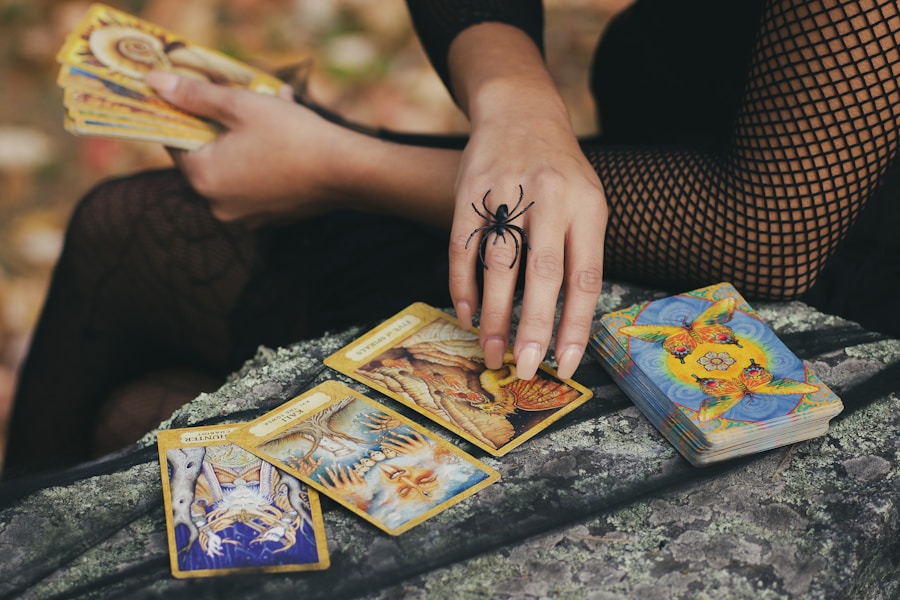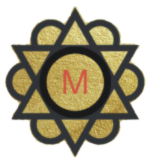
The tarot deck, a rich tapestry of imagery and archetypes, serves as a profound tool for introspection and guidance. Each card is imbued with layers of meaning, often drawing from a variety of cultural, historical, and psychological sources. The Major Arcana, consisting of 22 cards, represents significant life themes and spiritual lessons, while the Minor Arcana, divided into four suits, reflects the day-to-day experiences and challenges we encounter.
For instance, the Fool card symbolizes new beginnings and the leap of faith required to embark on a journey, while the Tower signifies upheaval and the necessity of dismantling old structures to make way for new growth. The symbolism within each card is not merely decorative; it serves as a language through which the subconscious communicates. The imagery often evokes emotions and thoughts that resonate with the individual’s current life situation.
For example, the imagery of the Two of Cups, depicting two figures exchanging cups, speaks to themes of partnership, connection, and emotional balance. This card can prompt reflection on personal relationships and the importance of mutual support. By delving into the symbolism of each card, one can uncover insights that may not be immediately apparent, allowing for a deeper understanding of oneself and one’s circumstances.
Key Takeaways
- Tarot cards are rich in symbolism and can be interpreted in various ways, allowing for personal insight and reflection.
- Connecting with your intuition and inner wisdom is essential for understanding the messages and guidance offered by the tarot cards.
- Embracing the concept of divine timing and synchronicity means trusting that everything happens for a reason and at the right time.
- Recognizing patterns and cycles in your life through tarot readings can provide valuable insights for personal growth and development.
- Exploring the concept of personal growth and transformation through tarot can lead to a deeper understanding of oneself and one’s journey.
- Embracing the idea of balance and harmony in your spiritual journey involves integrating the lessons and guidance from tarot into everyday life.
Connecting with your intuition and inner wisdom
Intuition is often described as a gut feeling or an inner voice that guides us through life’s complexities. In the context of tarot reading, tapping into this intuitive sense is crucial for interpreting the cards meaningfully. Each reading is not just about the cards laid out before you; it is also about how those cards resonate with your personal experiences and feelings.
To cultivate this connection, one must create a space that encourages introspection and openness. This could involve meditative practices, journaling, or simply spending time in nature to quiet the mind and listen to one’s inner thoughts. When engaging with tarot, it is essential to approach each reading with an open heart and mind.
This openness allows for a more profound connection to your intuition. For instance, when drawing a card, rather than relying solely on traditional interpretations, consider what emotions or memories arise in response to the imagery. If you pull the Empress card, which embodies fertility and abundance, reflect on what abundance means to you personally.
Perhaps it evokes memories of nurturing relationships or creative projects that have flourished in your life. By honoring these intuitive insights, you can gain clarity and direction that transcends mere card meanings.
Embracing the concept of divine timing and synchronicity

Divine timing is a concept that suggests everything unfolds according to a greater plan or rhythm.
For example, if you repeatedly draw cards that emphasize change or transformation during a period of uncertainty in your life, it may serve as a reminder that you are on the cusp of significant growth.
Recognizing these patterns can help you trust in the timing of your life events and decisions. Synchronicity can also be observed in how certain cards resonate with current events or feelings in your life. If you are contemplating a career change and draw the Eight of Pentacles, which signifies hard work and mastery, it may reinforce your intuition that now is the time to invest in your skills or pursue new opportunities.
This alignment between your inner world and external circumstances can foster a sense of reassurance that you are on the right path. By embracing divine timing and synchronicity, you cultivate patience and trust in the unfolding of your life journey.
Recognizing patterns and cycles in your life
Life is inherently cyclical; we experience seasons of growth, rest, challenge, and renewal. Tarot serves as a mirror reflecting these cycles back to us, allowing for greater awareness of our personal patterns. For instance, drawing cards that represent endings—such as the Death card—may indicate that you are entering a phase where letting go is necessary for new beginnings to emerge.
Recognizing these cycles can empower you to navigate transitions with grace rather than resistance. Moreover, understanding patterns in your life can illuminate recurring themes that may need attention or healing. If you frequently encounter cards related to conflict or struggle—like the Five of Wands—it may prompt you to explore areas where you feel challenged or where unresolved issues persist.
This awareness can lead to proactive steps toward resolution or change. By acknowledging these patterns through tarot, you can break free from cycles that no longer serve you and consciously choose paths that align with your highest self.
Exploring the concept of personal growth and transformation
Personal growth is often a tumultuous yet rewarding journey marked by self-discovery and transformation.
Each card drawn can represent different facets of our journey—some may highlight areas where we need to confront fears or limitations, while others may celebrate achievements and progress.
For example, drawing the Chariot card signifies determination and willpower; it encourages you to harness your inner strength to overcome obstacles. Transformation often requires us to step outside our comfort zones and embrace change. The tarot can guide this process by illuminating paths we may not have considered or by revealing hidden strengths we possess.
When faced with difficult decisions or transitions, consulting the tarot can provide clarity on which direction aligns with our true selves. The process of interpreting these cards fosters resilience as we learn to navigate challenges with newfound wisdom.
Embracing the idea of balance and harmony in your spiritual journey

Balance is a fundamental principle in both life and spirituality; it encompasses emotional stability, mental clarity, and physical well-being. Tarot encourages us to seek harmony within ourselves and our surroundings by reflecting on various aspects of our lives represented by different cards. For instance, drawing the Temperance card suggests moderation and balance; it invites us to assess areas where we may be overindulging or neglecting essential aspects of our well-being.
Incorporating balance into your spiritual journey involves recognizing when to take action and when to rest or reflect. The tarot can serve as a guide in this process by highlighting moments when you may need to recalibrate your focus or energy. If you find yourself consistently drawing cards related to introspection—such as the Hermit—it may indicate a need for solitude and reflection before moving forward with external pursuits.
By honoring these messages from the tarot, you cultivate a more harmonious relationship with yourself and your spiritual path. In conclusion, engaging with tarot offers a multifaceted approach to understanding oneself and navigating life’s complexities. Through symbolism, intuition, divine timing, pattern recognition, personal growth, and balance, individuals can embark on a transformative journey that fosters deeper self-awareness and spiritual fulfillment.
Each reading becomes an opportunity for exploration and insight, guiding us toward our highest potential while honoring the unique rhythms of our lives.
If you are interested in delving deeper into the spiritual lessons of tarot cards, you may find this article on the meaning of the Tarot card The Hermit to be insightful. The Hermit represents introspection, solitude, and inner guidance, which can be valuable lessons to explore during times of uncertainty or introspection. Additionally, The Fool card symbolizes embracing new beginnings and the unknown, offering a fresh perspective on taking risks and stepping into the unknown. Understanding the symbolism and numerology of these cards, such as






